#phula
Explore tagged Tumblr posts
Text
September 19, 2024!
Kans Grass - a silent whisper of Her arrival!

If you grew up in Odisha, autumn means the breathtaking sight of Kans Grass, or Kashatandi Phula, as we call it, blanketing the countryside. The stunning white scenery fills your heart with joy and anticipation, letting you know that the year-long wait is over and Maa is on her way. No matter how many years pass, the feeling never gets old.
I wish I were back home to experience the excitement again. Alas, I can only make do with this last year's video.
#september diaries#diary post#celeste's ramblings#odiablr#desiblr#desi tumblr#kans grass#kashatandi phula#durga puja anticipation
3 notes
·
View notes
Text
Ban Phula Forest Honey- KHEONI
Kheoni brings to you the Ban Phula raw honey, also called Bon Phool locally, which is a valuable treasure found in the Sundarbans Mangrove Forest of West Bengal. This honey is renowned for its exceptional taste and aroma, providing a nutritious and flavorful option to satisfy your food cravings. Collected from the lap of nature, this potent natural ingredient is packed with a variety of vitamins, minerals, and amino acids. Its unique slightly bitter and woody flavor sets it apart from other honey varieties.
0 notes
Text
A List of "Beautiful" Bengali Words & Phrases
for your next poem/story
Āguna - fire
Amader - ours; belonging; sense of community and collectivism
Ami shobai ke bhalo chai - I want everyone to be good
Āśā - hope
Bolo na janoa kichu - say something, please
Br̥ṣṭipāta - rainfall
Buddhiman - intelligent
Cā - tea
Chokh - (or cōkha) eye
Chomotkar - said when one looks at something in wonder; magnificent
Cirantana - eternal
Diganta - horizon
Ghore - home
Golpo - stories
Haashi - (or hashi) smile; laughter
Kichu na bola jay - don’t say anything
Kotha - words; speech
Moner agun - the burning fire within one’s heart; passion, desire
Mukhosh - mask
Phula - flower
Prem - (or prēma) love
Raag - anger; rage
Samprīti - harmony
Shundor - beautiful
Śubharātri - goodnight
Sources: 1 2 3 4 5 ⚜ More: Word Lists
If any of these words make their way into your next poem/story, please tag me, or send me a link. I would love to read them!
#requested#bengali#bangla#writing inspiration#langblr#linguistics#language#word list#writeblr#dark academia#writing reference#spilled ink#creative writing#light academia#literature#writers on tumblr#poets on tumblr#writing prompt#poetry#writing resources
60 notes
·
View notes
Text
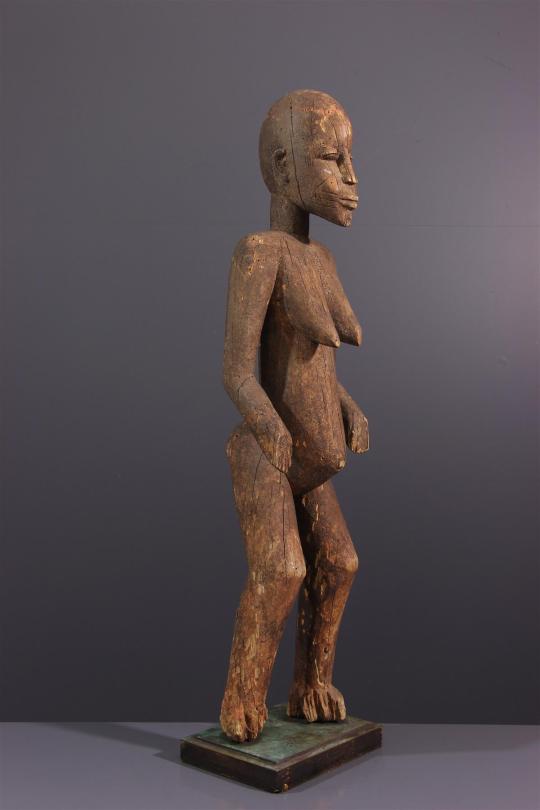
The Thila [Burkinese mythology; Lobi mythology]
At the dawn of time, the supreme deity Tangba You created the world. Tangba You fashioned the land, the seas, and then the humans to populate the world. But human men lusted after women and soon began fighting one another over the women, and the deity eventually grew tired of this. He was the creator god, after all, and we can assume he had better things to do than solve every petty issue among mortals. So he withdrew from the world of men, never again interfering with mortal affairs. Before leaving, however, Tangba You figured he should leave someone to guide and watch over humanity, so he created the Thila (singular: Thil): a group of semi-divine nature spirits.
This is the creation story of the Lobi people, who live in the north eastern parts of Côte d’Ivoire and south western Burkina Faso. They trace their roots back to Ghana.
The Thila play a very large role in traditional Lobi religion. These spirits are not really gods in the common sense of the word, but they are somewhat similar to the angels of Abrahamic religion (but note that they are sometimes described as ancestor spirits). They offer protection to the people, but also tell them how they should act. Though normally invisible to mortal eyes, these beings take on the form of an animal or a human in the rare event that they do appear before people.
Normally though, a Thil communicates solely through a ‘Thildar’, which is a human diviner in direct contact with the spirits (the societal role of these people can be likened to shamans of some native American traditions). As per the rules of their religion, a Thildar is always male, and usually there are only one or two of these diviners in a community. Each Thildar stands in contact with his own group of Thila spirits, with whom he can communicate during a divination. He then relays the will of the Thila, which includes guidelines and taboos pertaining to all kinds of subjects, including how the people should dress, have sex, hunt animals, etc. Sometimes the spirits demand to hold great feasts or festive events, and sometimes they forbid certain practises. One example is the village of Korhogo (near Gaoua): the people living here stopped sleeping on mats made from millet stem, because a Thil once forbade it. Also noteworthy is that Thila sometimes demand that the Thildar takes up a specific profession, like becoming a smith or a doctor.

This may sound strict to outsiders, but Thila are kind and benevolent spirits. They receive offerings during special occasions such as births and weddings, and bestow rain and childbirth on humanity. Should the people break the taboos that the Thila enforce, however, they can wreak havoc upon a community.
These spirits are believed to reside in special religious wooden sculptures called ‘Bateba’, which are usually housed in shrines dedicated to that specific Thil. This is important, because the act of placing a Bateba on a shrine greatly enhances its spirit’s ability to manifest in this world, allowing it to protect the people against evil (such as evil warlocks). If a Thil wants a shrine, it will tell this to a Thildar, along with specific instructions of where and how the shrine should be built. Within Burkina Faso, the Lobi are actually renowned for their woodworking skills, and as such the Bateba tend to be impressive works of art.
Finally, I want to mention that there are different kinds of Thila spirits, and the distinction is easily visible in their Bateba carvings. Some examples:
Bateba Phula are humanoid figures with a stiff standing pose. They house regular Thila.
Bateba Ti Puo house protective spirits that defend against evil; they feature raised arms.
A Thil Dorka houses a particularly powerful variant of Thila. It is a humanlike statuette with two heads, referencing the spirit’s ability to watch multiple locations at the same time.
Sources: Asante, M. K. and Mazama, A., 2008, Encyclopedia of African Religions, SAGE Publications, 920 pp. Peek, P. M., 1991, African Divination Systems: Ways of Knowing, African Systems of Thought, Georgetown University Press, 230 pp., pages 98-99. Harvey, G., 2014, The Handbook of Contemporary Animism (Acumen Handbooks), Routledge, 544 pp., page 68. (image source 1: African Arts Gallery, lot 12963) (image source 2: MutualArt)
58 notes
·
View notes
Text
A, mother of death.
If lies as the girl in ink, war doting eyes.
If the mother that wrote piles of wars in the body wrote Nepalese in looming wars.
Kasto cha ama. Tapai kasto hunuhuncha.
Timro kisama phula phulcha.
Tapako bhasma tara hami haum.
Unako.
How are you, ma? How is you.
Flowers bloom in your cold.
The star in your language is us.
Her.
Sunidhi
#spilled writing#spilled poetry#spilled words#writers and poets#writers on tumblr#spilled thoughts#writeblr#writing#female writers#the english language#writerscraft#dead poets society#poems poetry#poetry on life#poet#writer block#writer blog#poem#poets on love#poetry corner#poets on tumblr#original poem#poets corner#poetry#poetic#writerscommunity#the tortured poets department#poets on poetry#writerblr#poems on life
3 notes
·
View notes
Text
Day 7 - Faith/Rituals of love
"Come on! Say it, Nikita. It's a ritual."
"But I don't know how to make one on the spot. You just happen to be good at that, Aai."
Nikita and Trisha held a post-wedding get-together exclusive to certain relatives and close friends. They had come a long way since their first meeting at a jogging park 5 years ago.
Although Trisha was a couple years older than her, they got along very well. Trisha loved to make others laugh and sometimes Nikita laughed at her unfunny jokes just to see her proud smile. She was also a great friend. She always looked out for others, including Nikita. She always checked up on Nikita when she did not come to the park. One time, when Nikita came down with a fever, she came to her place by herself and then took drove her to a doctor.
It took them a six months-long friendship for Trisha to confess that she is bisexual is to Nikita. Nikita could not help but immediately come out to her at the very moment. Ever since then, they started slipping their presence into each other's lives more often. Then the obvious happened. They slowly realised what they felt for each other from a long time, was not one-sided at all. The confession was kind of a mess as it happened due to a playful flirting session between them that ended up with them kissing. But they worked it out in the end. Nikita could not even believe how quickly the time passed since their confession. And now, they were married.
"Ukhana doesn't have to be perfect. Just try it. It's the ritual that matters." Aai said.
It took some time for Aai and Baba to accept her fully. She came out a couple years ago. That time, they were shocked and worried. But later on, their daughter's happiness became the top priority for them. They still seemed hesitant some of the times as they were still not very used to the whole concept. But they were still learning. They were trying their best and that was enough for Nikita.
Surprisingly, Ashish was present at the gathering too. When Nikita came out to him, his reaction was positive. He stated that he forgave her 'betrayal' because he completely understood her situation. They got divorced for the better. But ironically their friendship got stronger after the divorce. He had been one of the few people who wholeheartedly supported Nikita's identity.
"Okay. I will try to say it." Nikita said nervously but also with a hint of excitement. Trisha winked at her ; To motivate her or to wish her luck? No one knows.
Nikita took a deep breath. It had been a long time since she said an ukhana. The last time was during the Satyanarayn Puja after her marriage with Ashish.
This time Nikita had to say ukhana for her the person she truly loved, Trisha. It was a little confusing. "How could I describe my wife in just some little poem?". She thought. Trisha deserved a thousand poems written about her. And Nikita would write those thousand poems but she would not want the world to know a single word of it, as if it was only reserved for Trisha.
Nikita pushed her too-many thoughts away and started reciting the poem
"Tujhya premachi challi ashi jaado
Prem geet aiktana tu lagli disu
Kontyahi phula peksha jaast sundar
Aahe Trishacha hasu"
[Translation: Your love had such magic on me
I started seeing you everytime I listen to a love song
No flower in the world can compete
The beauty of your (Trisha's) laughter]
"Waah! Waah! Kya baat hai!" Yelled Nikita's friends enthusiastically, as if they were attending a poetry recital.
Nikita gasped "You guys are trolling me. That was cringe. "
Then, Nikita heard a laughter to her side. Her wife was laughing. Her usual stern voice sounded very light. Her cheeks were brushed with a shade of pink.
"Oh my god!" Trisha said between laughs "That's the cutest thing I have ever heard. I loved it, Nikita."
Nikita's ukhana was completely true. In fact, not only flowers, but the beauty of the entire nature could be seen Trisha's laugh. She was truly lucky to have this woman as her wife.
...
@desi-lgbt-fest
#desilgbtfest23#desi lgbt fest 2023#desi wlw#desi queer#teju writes#svdjegeejejejeke I know the ukhana is very bad#I can't write ukhanas to save my life. sorry.#but i still wanted to write something about it for this prompt
18 notes
·
View notes
Note
OMG, please keep updating us on Amisha, Aarav and Paridhi. I've never been more interested. "Kuch kuch hota hai" story line bante hue? 🤣
LMAO
Paridhi ghar chali gayi aur uske papaa upar se paani daal rahe now everyone is like Uncle paridhi kaha hai??!!!!!!
Uncle bolte woh andar balloon phula rahi hai, maregi tum sabko abhi
Biscuit boy side mein baithke biscuit khaa raha hai🤣
4 notes
·
View notes
Text
Just Indian things #2
The story of every kid going to temple:
Maa taking you to mandir every weekend against your will when you were little.
"Aao mandir chale beti/beta"
"Nahiiii"
"Bhagwan ke darshan ko na nahi kehte, chalo"
Muh phula ke bhagwan ko dekhna aur sochna ki "mere friends kitna kuch khel rhe honge, sab aapki vajah se ho rha hai, Bhagwan ji"
Phir prasad pasand aana aur har bar prasad khane jana
Mandir ka ghanta uchhal uchhal kar bajana
Phir notice karna ki har din bhagwan ka shringaar alag tarah ka hota hai, aur unhe khush karne ke liye phul arpan karna.
Choti choti si wishes jo asal mai badi hoti hai
"Bhagwan ji mujhe plane mai safar kara dena pleaseee"
"Mai aapse milna chahti/chahta hu!"
Dheere dheere aarti memorize ho Jana aur har bhajan ko dhyan se sunna, Bhagwan ka naam japna.
Apni saari problems unse share karna bhale hi choti ho
"Bhagwan ji aapko pata hai kya hua? Aaj na maa ne mujhe bohot daata aur dost ne bad word use kiya, buri baat na?"
Unse secrets share karna aur "shhhh kisiko batana mat ha?" keh kar man halka karna.
Bhagwan muskurate hue aapko bada hote hue dekhta hai aur ek din esa aata hai jab parties se zyada acha mandir lagne lagte hai.
Saari problems bhul kar bas us bhagwan ko nihar lene ka man karta hai
Maa ko vishwas hi nahi hota ki aap kabse yeh bolne lage ki
"Mandir chale, maa?"
x x x
love the innocence we all used to have as kids, so pure and simple
- @aarambh-hai-prachand
5 notes
·
View notes
Text
Sambalpuri Handloom Saree: A Timeless Treasure of Odisha's Rich Culture
Odisha, a land of vibrant traditions and unmatched craftsmanship, is home to one of India’s most iconic handloom treasures—the Sambalpuri Handloom Saree. Renowned for its intricate designs, rich textures, and cultural significance, this saree is a testament to Odisha’s centuries-old weaving heritage and artistic brilliance.
The Legacy of Sambalpuri Handloom Sarees
The Sambalpuri saree originates from Sambalpur, a district in Odisha, where weaving is not just a craft but a way of life. This exquisite attire is traditionally crafted using the unique Bandha technique, where threads are tie-dyed before weaving to create stunning patterns. The process, known for its precision and patience, reflects the dedication of Odisha’s artisans to their craft.
Designs Inspired by Odisha’s Culture
Sambalpuri sarees are deeply rooted in the culture of Odisha, often showcasing motifs that symbolize the region’s traditions and beliefs. Common patterns include:
Shankha (Conch Shell): Represents purity and spirituality.
Chakra (Wheel): Inspired by the famous Konark Sun Temple, a UNESCO World Heritage Site.
Phula (Flower): Signifies beauty and nature, echoing Odisha’s lush landscapes.
Each saree tells a story, connecting wearers to Odisha's cultural tapestry.
The Pride of Handloom Weavers
The artisans behind Sambalpuri sarees are the lifeblood of Odisha's handloom industry. These weavers, often belonging to generations of skilled families, dedicate months to create a single saree. Their meticulous craftsmanship ensures every saree is a masterpiece, reflecting Odisha’s heritage in every thread.
Odisha’s Festivals and Sambalpuri Sarees
No celebration in Odisha is complete without the grace of a Sambalpuri saree. Women drape themselves in these elegant handlooms during festivals like Rath Yatra, Nuakhai, and Durga Puja, proudly showcasing their cultural roots. For Odias, Sambalpuri sarees are more than attire—they are a symbol of identity and tradition.
Sambalpuri Sarees in Modern Fashion
While deeply traditional, Sambalpuri handloom sarees have found their place in modern wardrobes. Designers and fashion enthusiasts across India and beyond are incorporating these timeless weaves into contemporary styles, ensuring their relevance for younger generations. This blend of tradition and modernity highlights Odisha’s adaptability and cultural pride.
Why Choose Sambalpuri Sarees from SATYAM Retail?
At SATYAM Retail, we celebrate Odisha’s rich heritage by bringing you the finest Sambalpuri sarees. Our collection is a tribute to the artisans who pour their heart and soul into these creations. By choosing Sambalpuri sarees, you’re not just buying attire—you’re embracing a piece of Odisha’s legacy and supporting its vibrant handloom industry.

Preserving Odisha’s Cultural Heritage
As the demand for fast fashion grows, Odisha’s handloom sector faces challenges. By supporting Sambalpuri sarees, we contribute to preserving this art form and uplifting the livelihoods of local weavers. Every Sambalpuri saree is a reminder of Odisha’s timeless culture, and wearing one is a celebration of its artistic spirit.
Conclusion The Sambalpuri Handloom Saree is more than just a garment—it is an embodiment of Odisha’s culture, traditions, and unmatched craftsmanship. From its intricate patterns to its cultural significance, this saree connects generations and tells stories of a proud heritage.
Explore the elegance of Sambalpuri sarees with SATYAM Retail and embrace the essence of Odisha in your style. Celebrate tradition, support artisans, and make a timeless statement with these iconic weaves.
#Sambalpuri Handloom Saree#Sambalpuri Saree Online#Best Sambalpuri Saree#Sambalpuri Kurti for Women#Sambalpuri Silk Saree#Sonepur Patta Saree
0 notes
Text
O Teri (Title Song) Lyrics
Singer:Puja Bhalla, Neuman PintoAlbum:O Teri O.. O.. O..Mast ke chashme ko chadha lo, O..Chinta ki chingam ko nikalo, O..Tension wholesale bech ke aao, O..Jashn ke gubbare ko phula loFikr aisi ki taisi kareBhaigiri ka zaraa mood bane, O..Style apna ek number hai, O..Abe jiska jalna hai woh jale Dekh tamasha button aankhon ke ye khol, bolO.. Teri O TeriO.. Teri O TeriO.. Teri O Teri (x2) Dekh…
0 notes
Text
This Is Not a Burial, It’s a Resurrection: Staying Power
By Zakes Mda ESSAYS. — JAN 24, 2023
The story of Lemohang Jeremiah Mosese’s This Is Not a Burial, It’s a Resurrection (2020) unfolds through poetry. The poetry of images and words—the interplay of light and shadow, and the lyricism of the narration. It ensnares us right from the opening shots, of a horse going through an aesthetically beautiful yet obviously traumatic experience at the hands of blanketed Basotho men and women. The action is made more haunting by the application of a Wong Kar Wai–esque step-printing technique—which blurs and then sharpens and then smears the image over the excitement of the perpetrators and the resistance of the victim.
The film is set and was filmed in Lesotho, a former British protectorate that is now an independent kingdom, which is geographically completely surrounded by South Africa and therefore highly dependent on South African goods and services. A great percentage of Lesotho citizens work in the mines, farms, and homes of South Africa, and Lesotho also relies heavily on their remittances. For its part, however, South Africa needs the water that is piped to it from Lesotho, where huge dams have been constructed. Many Lesotho villages have been displaced to make way for the construction of these dams. At the heart of This Is Not a Burial is just such a displacement. The story focuses on the bereft eighty-year-old widow Mantoa, an accidental hero who finds herself becoming a catalyst for her community’s resilience.
The setting of the film’s opening is bleak. We are in a run-down tavern. The notes of a lone lesiba instrument fill the air—if we can talk of air in this environment, which looks stuffy despite the fact that the space is sparsely populated, its denizens all sitting or standing by themselves, each perhaps contemplating the social pain caused by a lack of connection with others, each body weighed down by loneliness at worst, solitude at best. Perhaps we’ll learn which as the movie proceeds. Loneliness is imposed on one; solitude is a choice. Solitude is the state of being alone without being lonely.
Solitude is also the stuff of magical-realist fiction. And This Is Not a Burial has strong elements of that narrative mode, not because it exudes a sense of the supernatural but because, in it, the strange and the unusual exist in the same context as objective reality, without being disconcerting. For example, in one scene, as Mantoa (Mary Twala Mhlongo, who was seventy-nine years old at the time of shooting) sits among the ashes and debris of her burned-down house, a group of sheep appears, and the animals rally around her, giving her solace.
In the opening, the aloneness of the denizens of the tavern, even in the midst of company, is also haunting: a man stands alone against the wall drinking a quart of beer directly from the bottle and nodding absently to the music; two lovers sit on a bench with their backs to each other; another lone man smokes a cigarette and blows a cloud of smoke; a woman dances alone, languidly flapping her arms like a drunken bird to the music of the lesiba. Indeed, everything is languid and lonesome here, including the music. A lesiba is a mouth-resonated wind instrument played by the Basotho and the Khoikhoi peoples, with a flattened quill attached to a string stretched over a long stick. Its notes are often accompanied by guttural grunts made by the player. In this scene, these sounds enhance the ethereality of the ambience.
The lesiba player here is also the film’s narrator. He is portrayed by the well-known South African actor Jerry Mofokeng Wa Makhetha. He gives a virtuoso performance without moving an inch throughout the movie. Only his face, as seen in the tavern, and his elegiac voice carry the gravitas of the narration. His pace is slow and deliberate. He introduces us to Mantoa’s village: the old people called it Phula ea Meokho, which literally means the Valley of Tears but is translated as Plains of Weeping in the movie for, I think, poetic reasons. When French missionaries came to Lesotho in the 1830s, they renamed the village Nasaretha, after the biblical Nazareth. The narrator tells us, “They say in Nasaretha, if you place your ear to the ground, you can still hear the cries and whispers of those who perished under the flood, their spirits hallowing from the deep.”
From this, it becomes clear that setting is very important in This Is Not a Burial. The landscape itself tells the story. It is a character in its own right, not just a place where the story happens because a story must happen somewhere. It even speaks and cries for what the villagers have lost and what they are about to lose.
When the story begins, after the lesiba player’s long but engaging narration, we learn that the Lesotho government intends to flood the valley and build a large dam as part of a program of “progress” and “development”—or so the villagers are told by the bureaucrats who hold meetings to convince them of the wisdom of the decision. The reality is that South Africa needs the “white gold,” as water is affectionately called, for its thirsty cities and industries. The villagers are going to be moved to Motimposo, on the outskirts of the capital city of Maseru, a place that is already crowded with mostly unemployed people. This means, of course, that the villagers will have to abandon their rural lifestyle: their fields, their horses, their cattle, and, most important, the merino sheep from whose wool they earn a livelihood, after their exciting annual sheep-
shearing competitions. But most painfully, they will have to desert the graves of their forebears. That will be an abomination of the first order. Basotho venerate their ancestors. Ancestors are the intercessors between the living and the Great Creator, Molimo. Imagine what misfortune must befall ungrateful men and women who abandon their ancestors to be drowned in a human-made lake that covers the only home they ever knew! No wonder there is resistance to the forced removal.
That resistance is led by Mantoa, who has lost all her relatives, most recently a son who was expected home for Christmas from the gold mine where he worked but who perished underground with the rest of the miners. Only his corpse arrives home, and we witness a colorful funeral attended by men and women in Basotho blankets, predominantly of a rich blue. Mantoa is concerned about what will happen to the graves if the village is flooded. Politicians tell her, “It’s your call what you do with your graves . . . The ministry will provide assistance to those who choose to move their graves.”
Similar struggles against the negative impacts of large dams, particularly the mass displacement of poor communities and the loss of land, have been waged all over the world. These mammoth constructions are always accompanied by human-rights violations, especially against Indigenous communities, in such far-ranging countries as Brazil, the United States, India, and the Philippines. Mantoa takes a bus to the local administrative center to make an appeal against the dam to a minister, but she is shunned by the bureaucrats there. Her resistance next takes the form of weeping and screaming, to the extent that people from the village come to her home, thinking there has been another death. The village elders decide that she is mad. Mantoa’s resistance is fueled by her wish to be buried in Nasaretha, next to the graves of her kin. She rallies the support of her compatriots, who insist, “We are staying here!”
The village is self-sufficient, though its resources are meager. This is a valley of death, yet it is also a healing valley, where flowers and herbs that cure different ailments grow in abundance. Mantoa yearns to sleep and never wake up again. Yet she continues to help the sick get well with herbs from the mountain and valley, and to engage in life-sustaining activities in communion with the rest of society, winnowing corn and washing clothes in the river even while yearning for death. At one point, she tells the village pastor, “There is no meaning to my husband’s death . . . Yes, that’s grief.” She arranges her own funeral—let the dead bury their own dead, the narrator rejoins—giving instructions on how and when it should be carried out, who should sing Sesotho traditional music there, and what kind of coffin should be used.
She spends her time listening to obituaries on the radio. She warms the batteries of her radio in the sun on the windowsill to prolong their life. It is a telling symbolic act. She shows a flicker of a smile as she waltzes alone in the room, in the arms of an imaginary lover. The narrator admonishes her: “Lament, old widow. Weep. Weep. For death has forgotten you.”
She wears perpetual mourning clothes even as she visits neighbors, giving them life by helping those who are sick; she spends the late afternoons preparing the site at the graveyard for her own grave. When the villagers refuse to dig her grave, she digs it herself.
But for now, we leave her there, digging. We go back to what we started with: how exquisitely this movie has been made, and how effectively it transmits the meaning in a simple story by defying a lot of established conventions of contemporary cinema.
First of all, Lesotho cineaste Mosese—who wrote, directed, and edited the film—gives a unique kind of narration to the poetic and musical narrator, drawing very much from such Sesotho performance modes as tšomo (written in South African Sesotho orthography as tshomo), a classical oral tradition that is still in use, especially among families in rural Lesotho. The expository nature of tšomo lends itself excellently to the filmmaker’s style. He confirmed in an interview on South Africa’s Radio 702 that he sees his film as “almost a folklore narrative.”
This is truly a Lesotho movie, not only because of its setting and the fact that it was created by a Lesotho artist—born and raised in Hlotse, Lesotho, Mosese now lives and works in Berlin—who is drawing from a deeply Sesotho aesthetic. Almost all the actors—including Makhaola Ndebele, who plays the pastor; Mofokeng Wa Makhetha, whom I have already mentioned, as the narrator and player of the lesiba lamentations; and Silas Taunyane Monyatsi, the bureaucrat and politician—have Lesotho roots. This may come as a surprise to followers of the South African film and television industry, as these are familiar faces there. Of the principal cast, only the South African Twala Mhlongo is an import.
The most important convention that Mosese defies here, a choice that could have endangered the reception of his film if he had failed to handle it with panache, is that of beginning one’s film in medias res. The modern reader and viewer expects exciting action from the word go. Yet this movie starts languidly and depends not only on the lesiba and narration but also on an emotional ambience that foreshadows the texture and the tenor of the story. It is fortunate for the director that he was not dependent on South African funders; they would likely have insisted that the first thirty minutes of This Is Not a Burial be chopped off, to accord with the only formula of storytelling they know—which they often refer to as the tried-and-tested Hollywood formula. These film-development mandarins would have been riled up: “What’s exposition doing in this screenplay?”
It would have been a sad loss. It would have messed up this work of art.
Mosese also compellingly uses lingering, evocative shots of darker moments that are dependent on stillness rather than motion for their effect. These work perfectly for Twala Mhlongo’s tour-de-force performance, for her face with its graceful ravines of age, and for her whole persuasive demeanor. Long takes sometimes catch her stillness, her body imprisoned by loneliness, her face a study of pain. Quite often, the film is reminiscent of slow cinema such as that made by Theo Angelopoulos, a genre that emphasizes long, contemplative takes.
The cinematography of This Is Not a Burial is breathtaking—panoramic shots of the mountains, the mist that sometimes covers them, horses and their blanketed riders, and musicians playing another instrument of Sesotho traditional music, the accordion. The film’s long takes and uninterrupted tracking shots not only give the audience a sense of place but also convey feeling.
This movie is a fitting swan song for Twala Mhlongo, who died while it was on the festival circuit, and after its release in South Africa. Though This Is Not a Burial is about the power of grief, it is uplifting and satisfying. It is subtly about resilience. The director approaches his subject with so much compassion. Remember: the title proclaims that the film is about resurrection.
Mosese is an aspiring painter. He has also achieved painterliness through the camera. Each shot can be harvested for a still of utmost beauty. Gentle beauty against the grittiness of the story. Two hours of relentless beauty. This is not just a movie, it’s a narrative art installation.
Zakes Mda is a visiting professor in the English department of the Johannesburg Institute for Advanced Study, University of Johannesburg; a creative-writing adjunct at Johns Hopkins University; and an emeritus professor of English at Ohio University.
#Criterion#Lesotho#Cinema#Lemohang Jeremiah Mosese#Mary Twala Mhlongo#Zakes Mda#University of Johannesburg#Ohio University#Johns Hopkins University#Theo Angelopoulos#Makhaola Ndebele#Mofokeng Wa Makhetha#Silas Taunyane Monyatsi
1 note
·
View note
Text


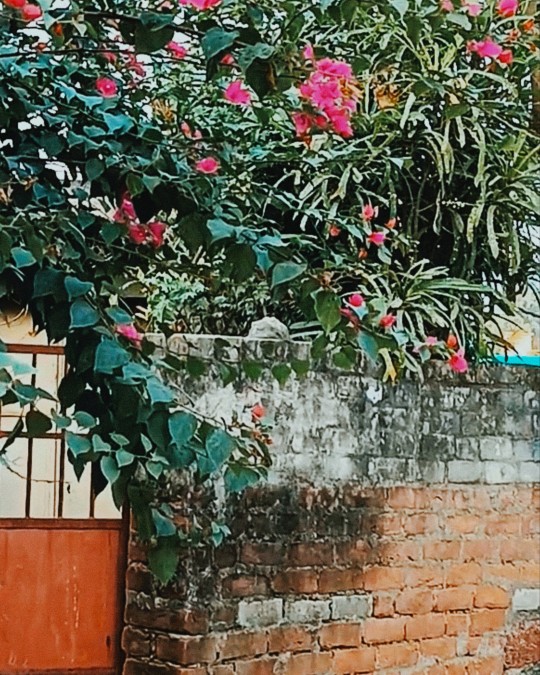
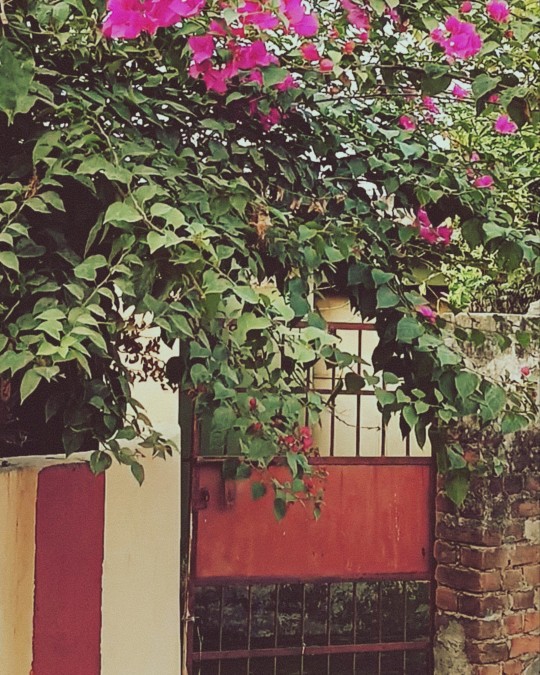

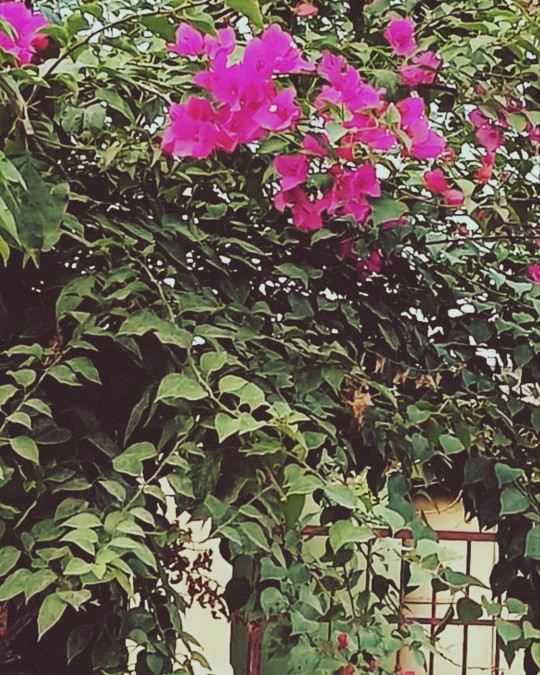
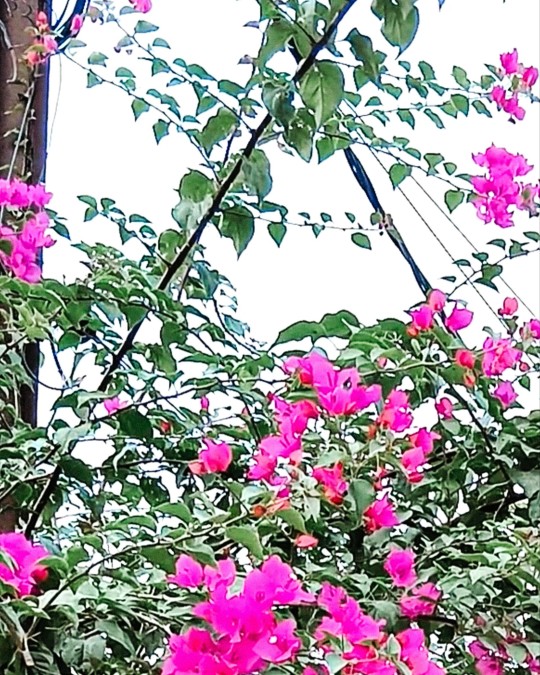
We call this Kagaza Phula, meaning paper flower in Odia. Everyday, I see this while going to my student's house. I always wanted to take pics, but was worried that the owners would find me weird when they see me standing near the gate of their house. Finally, I got over the awkwardness today and took the pics.
Does bougainvillea grow from a stem? If I ask the owner for a stem and plant it near my house, will it grow? I am genuinely curious. I have very little knowledge about gardening and I really love this flower.
19 notes
·
View notes
Text
Membandel, Pedagang Pasar Tumpah di Sanglah Kembali Ditertibkan Pol PP Denpasar

BALIPORTALNEWS.COM, DENPASAR - Pedagang pasar tumpah dikawasan Pasar Sanglah, Denpasar yang berjualan menggunakan badan jalan kembali ditertibkan Satuan Polisi Pamong Praja (Satpol PP) Kota Denpasar, Kamis (25/1/2024). Kedatangan petugas Satpol PP yang juga melibatkan tim gabungan dari Desa Dauh Puri Kelod menindak tegas pedagang pasar tumpah yang membandel menggelar barang dagangannya diatas trotoar dan menggunakan bahu jalan. Penertiban ini juga tampak dipantau Sekda Kota Denpasar, Ida Bagus Alit Wiradana, yang meninjau beberapa lokasi pedagang pasar tumpah didampingi Kasat Pol PP Kota Denpasar, A.A Ngurah Bawa Nendra dan Perbekel Desa Dauh Puri Kelod, Nengah Suartha. "Kami mengimbau kepada para pedagang untuk taat terhadap aturan tentang ketertiban umum. Tidak saja merugikan pengguna jalan, namun juga dapat membahayakan para pedagang itu sendiri," ujar Sekda Alit Wiradana. Lebih lanjut disampaikan, kawasan Pasar Sanglah yang juga menjadi jalur lalu lalang mobil ambulance kegawatdaruratan menuju RSUP. Prof. Dr. I.G.N.G Ngoerah Denpasar. Sehingga para pedagang tumpah yang menggunakan bahu jalan dapat menghambat penananganan kegawatdaruratan. Sehingga harapan kami kepada para pedagang untuk mencari lokasi berjualan yang aman dan nyaman di lokasi Pasar Sanglah dan juga Pasar Rakyat Phula Kerti. Disamping itu, Sekda Alit Wiradana juga menyampaikan akan segera melakukan rapat koordinasi untuk menyelaraskan informasi di lapangan, serta memastikan langkah efektif dalam penanganan pedagang tumpah di kawasan Pasar Sanglah. "Harapan kami untuk bersama-sama menjaga ketertiban umum, terlebih berjualan menggunakan bahu jalan yang dapat mengganggu pengguna jalan, serta membahayakan bagi para pedagang," ujarnya. Sementara Kasat Pol PP Kota Denpasar, A.A Ngurah Bawa Nendra menyampaikan, penertiban kepada pedagang pasar tumpah rutin di laksanakan Satpol PP Denpasar. Penertiban kali ini melibatkan 20 petugas Sat Pol PP Denpasar dan juga tim gabungan dari Desa Dauh Puri Kelod. "Sejak pagi pukul 05.00 WITA, petugas Satpol PP Denpasar telah memantau situasi pasar tumpah di kawasan Pasar Sanglah, dan mendapati sebanyak 11 pedagang yang membandel berjulan menggunakan bahu jalan dan trotoar," ujarnya. Lebih lanjut disampaikan, dalam penertiban ini kami menahan KTP para pedagang yang membandel, untuk kami lakukan pemanggilan di Kantor Satpo PP Denpasar. Di samping itu pihaknya juga telah melakukan pemanggilan kepada pemilik toko yang memberikan pelataran tokonya sebagai lokasi sewa untuk berjualan kepada para pedagang tumpah. "Kami memanggil pemilik toko, karena lokasi pelataran untuk parkir bukan untuk tempat berjualan yang dapat menjadi pemicu kemacetan di lokasi Pasar Sanglah ini," ujarnya. Diharapkan kepada pedagang, pemilik toko, dan seluruh stakeholder di Desa Dauh Puri Kelod untuk bersama-sama menciptakan kawasan pasar rakyat yang aman dan nyaman bagi pedagang dan konsumen.(bpn) Read the full article
0 notes
Text
Kisan Diwas: Five Farmers You Should Know About

23rd December is annually celebrated as ‘Kisan Diwas’ to honour the 5th Prime Minister of India, Chaudhary Charan Singh. He has been referred to as the Champion of India’s peasants for his contribution toward the upliftment of farmers.
On Kisan Diwas, farmers in India arrange seminars at the divisional, district, and block levels and are educated about the various schemes that have been implemented by the government for their benefit.
To observe Kisan Diwas, we would like to look at five notable farmers who have made significant contributions to the agricultural sector.
Rajkumari Devi

Popularly known as ‘Kisan Chachi’, Rajkumari Devi is a farmer from Muzaffarpur, Bihar, India. She can be seen travelling in a cycle from village to village, educating people about kitchen farming. She also encourages women to be financially independent through farming. She has set up a non-profit organization, Anandpur Jyoti Centre, which employs women to make processed products like jams, jellies, and pickles.
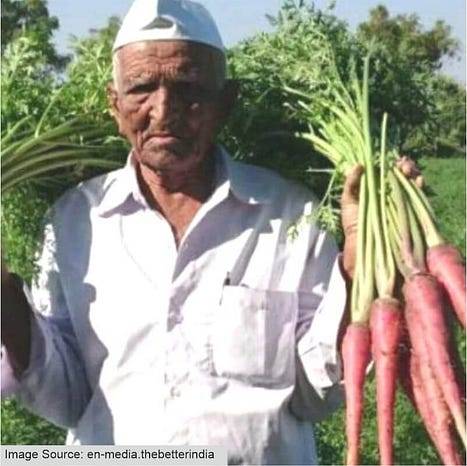
Vallabhbhai Vasrambhai Marvaniya is famous for introducing carrots to the state of Gujarat, as locals did not consider the vegetable fit for consumption back then. He first tasted the vegetable while feeding the cattle. Finding it to be delicious, he decided to grow it and sell it at the age of 13. The business soon boomed. Even Nawab of Junagadh, Muhammad Mahabat Khan III, became his regular customer.
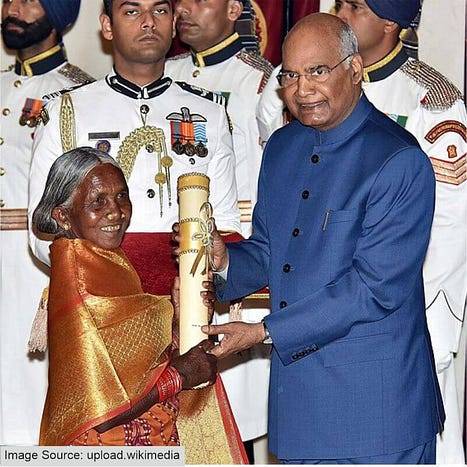
In 2018, Kamala Pujhari was appointed as a board member of the Odisha Planning Board by CM Naveen Patnaik. She was even awarded the Best Farmer Award by the Odisha Government in 2004. This reverence was not unfounded, as Kamala has been credited with preserving over a hundred traditional paddy varieties, along with the endangered breeds of black cumin, sesame, turmeric, maha kanta, phula and ghantia. She also raised her voice against chemical farming, encouraging the villagers to abandon chemicals and engage in organic methods of farming. She got global fame and recognition at an organic farming workshop by the Foundation at Johannesburg in 2002.

Venkateswara Rao Yadlapalli is one of the most innovative farmers in India. He uses modern-day technologies to help farmers adopt organic farming. This includes his recently launched mobile apps on natural and allied farming. He also runs magazines like Rythunestham, Pasunestham and Prakruthi Nestham, that promote natural farming, animal husbandry, and horticulture. He even honours farmers by conducting annual felicitation and award ceremonies to honour the farmers with remarkable achievements.

Ram Saran Verma is known as Uttar Pradesh’s hi-tech farmer. In 1988, he became one of the first farmers in the state to introduce tissue culture for banana farming. He also grew red bananas, which against Rs 15 per kg for the regular variety, were sold at Rs 80–100 per kg. Today, his methods have benefited over 50,000 farmers in his neighbouring districts. He also hosts training sessions and workshops for farmers from within and outside the country.
Filaantro, along with Child Help Foundation, are sympathetic to the downtrodden and tries its best to uplift the poor. 2,147 individuals have benefited from the village development projects.
Thank you for taking the time to read this article. Make sure to share it with all your friends and family members.
#crowdfunding#fundraising#raise funds#charity#filaantro#nonprofits#education#donate#donations#volunteering
0 notes
Photo
Kamala kee phula (IAST : Kamala kē phula)
Kamala (कमल) = Lotus flower or Water lily.

कमल के फूल
415 notes
·
View notes
Video
youtube
Baba Akali phula singh ji history in punjabi | akali phula singh and mah...
0 notes